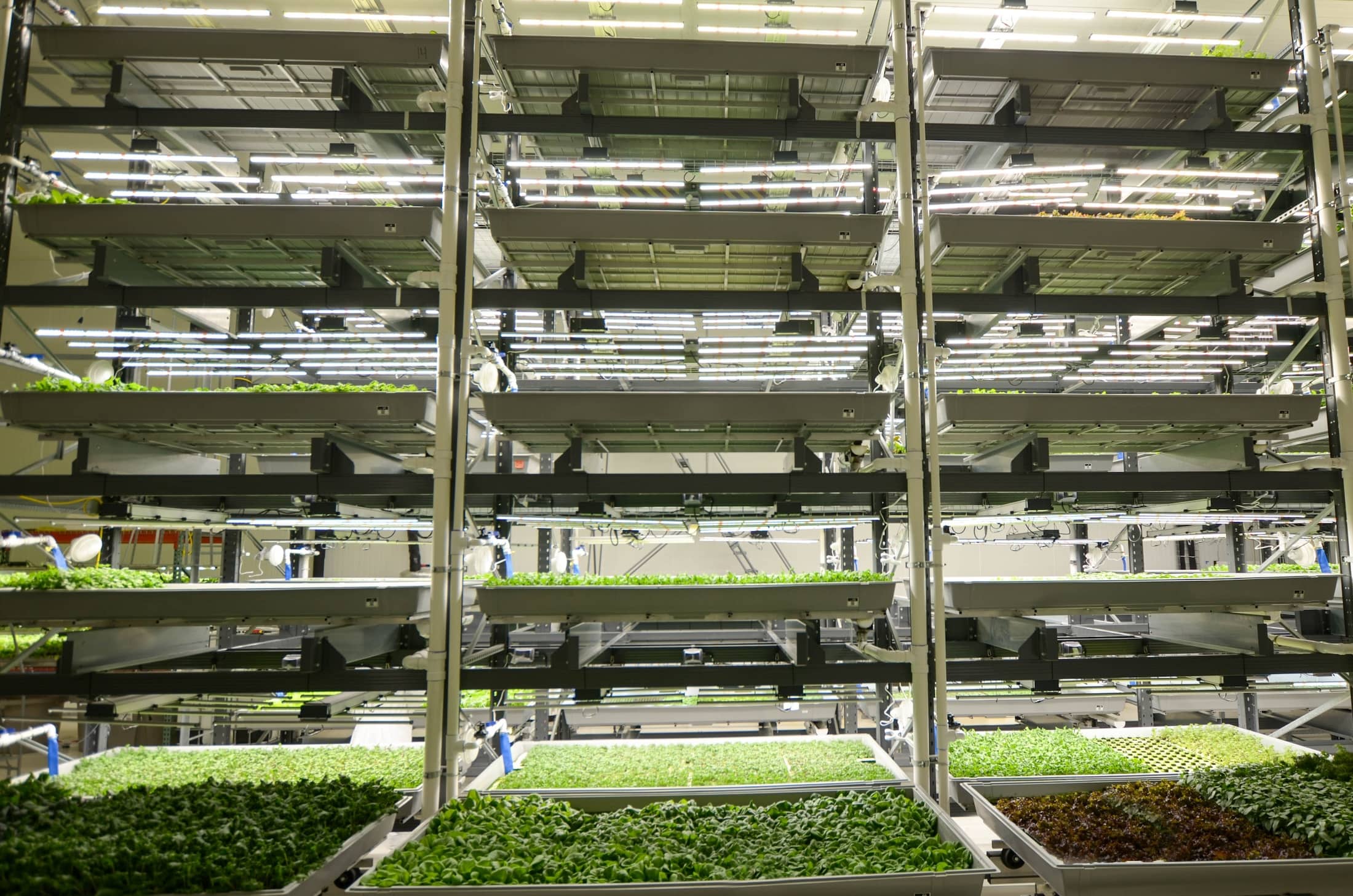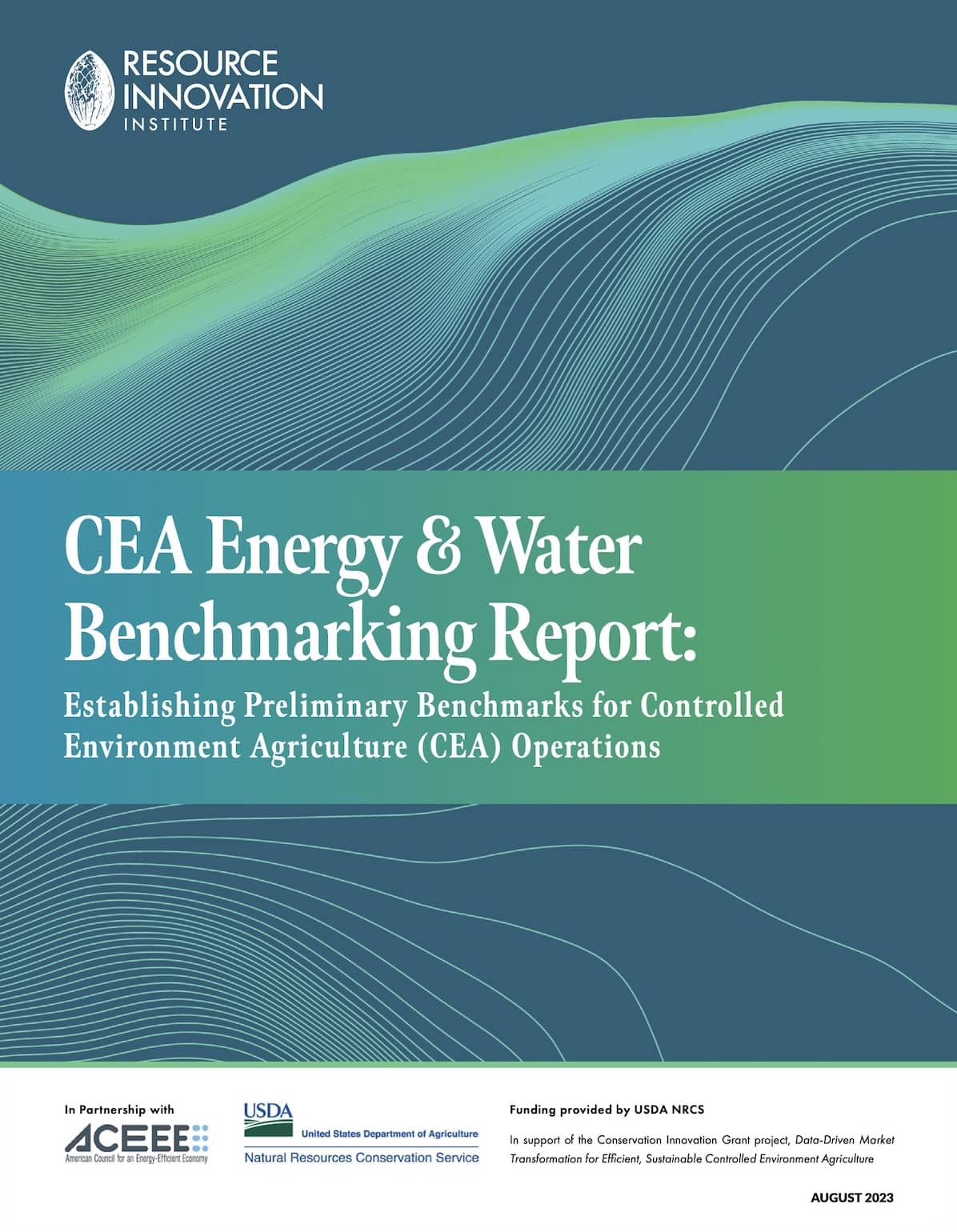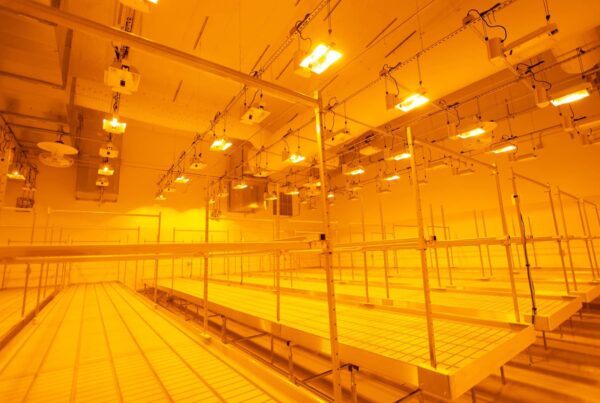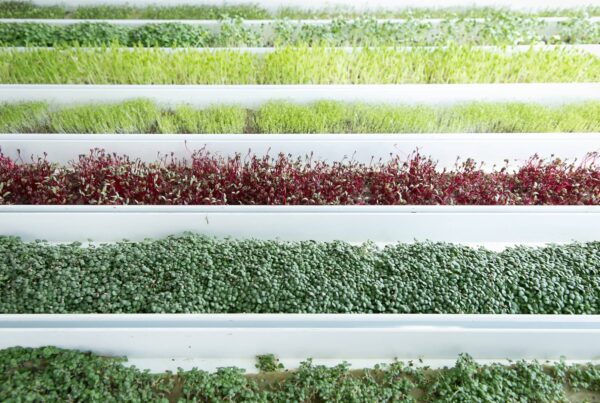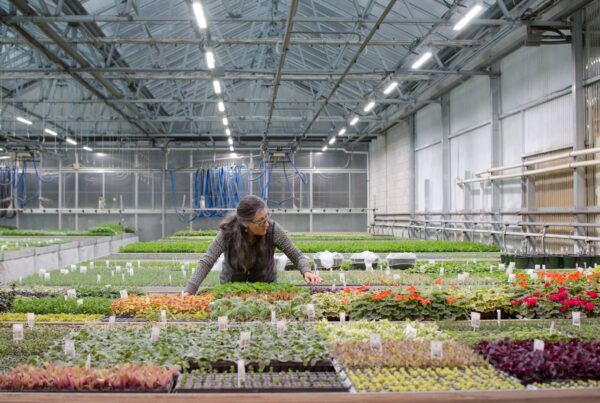Productivity-based, rather than area-based, resource measurement is appropriate in our increasingly populated and climate-constrained world
Greenhouse and indoor farming, otherwise known as Controlled Environment Agriculture (CEA), has emerged as a promising solution to meet the global demand for sustainable food production, especially in the face of climate change and urbanization. As the practice gains momentum, evaluating the energy efficiency of CEA facilities becomes paramount.
RII has taken on this measuring assignment, and preliminary findings are available in RII’s “CEA Energy & Water Benchmarking Report.” One important finding (and recommendation) from the report is there is an opportunity to better measure the efficient use of energy in CEA facilities.
Traditionally, area-based Energy Use Intensity (EUI) has been the go-to metric for assessing energy efficiency in most buildings. Utilities turn to this measurement to help determine energy rebates and incentives, policymakers create standards using this metric, and architects, system engineers, and facility designers often use this formula to project energy loads.
However, a more nuanced, and CEA-appropriate, approach is to measure efficiency based on crop productivity.
The Problem with Area-Based EUI
Most utility providers, as well as most building and engineering system designers, commonly use area-based EUI to determine the energy efficiency of traditional structures like office or commercial buildings. However, looking at facility square footage alone is not as relevant in CEA. For example, a measure of a facility’s area can miss the benefits of vertical racking systems to increase production capacity without increasing facility footprint.
CEA farms are more like industrial operations. The objective is to increase harvests through the optimization of land and resources used. Therefore, by normalizing energy use by weight of final product output–pounds of biomass per unit of resource used–one can get a more accurate picture of a CEA facility’s energy or water use.
The Promise of Crop Productivity-Based EUI
By evaluating energy consumption concerning crop yield, it becomes easier to identify areas where energy inputs can be streamlined or adjusted across critical growth stages. This precision approach not only conserves resources but also enhances the overall quality and quantity of the harvest.
“As the growing population of humanity shifts toward a climate-constrained world, agricultural production should be measured based on the benefit a facility provides to society and consumers.” says Tom Stenzel, Executive Director of CEA Alliance, a membership trade association representing and serving vertical farms and greenhouse producers growing fruits and vegetables in a highly controlled indoor production environment. “This method enables standardized comparison across different agricultural settings, from fields to buildings.”
Time To Shift
As the global population continues to grow and environmental concerns intensify, the role of controlled environment agriculture in ensuring food security is becoming increasingly significant. To uphold the principles of sustainability and efficiency, it is crucial to reevaluate the metrics used to assess CEA facility energy usage. While area-based energy use intensity has been the norm in many buildings, its limitations in CEA facilities are clear.
The shift towards crop productivity-based energy use evaluation offers a more comprehensive and accurate view of efficiency. By considering the energy expended relative to crop yield, this approach encourages optimized energy allocation, enhances crop diversity, and enables targeted energy optimization strategies.
“As agricultural practices evolve to integrate technologies that drive output, embracing this metric will be the key to cultivating not just more energy-efficient operations, but also a more resilient future for food production,” says Derek Smith, Executive Director of Resource Innovation Institute.


